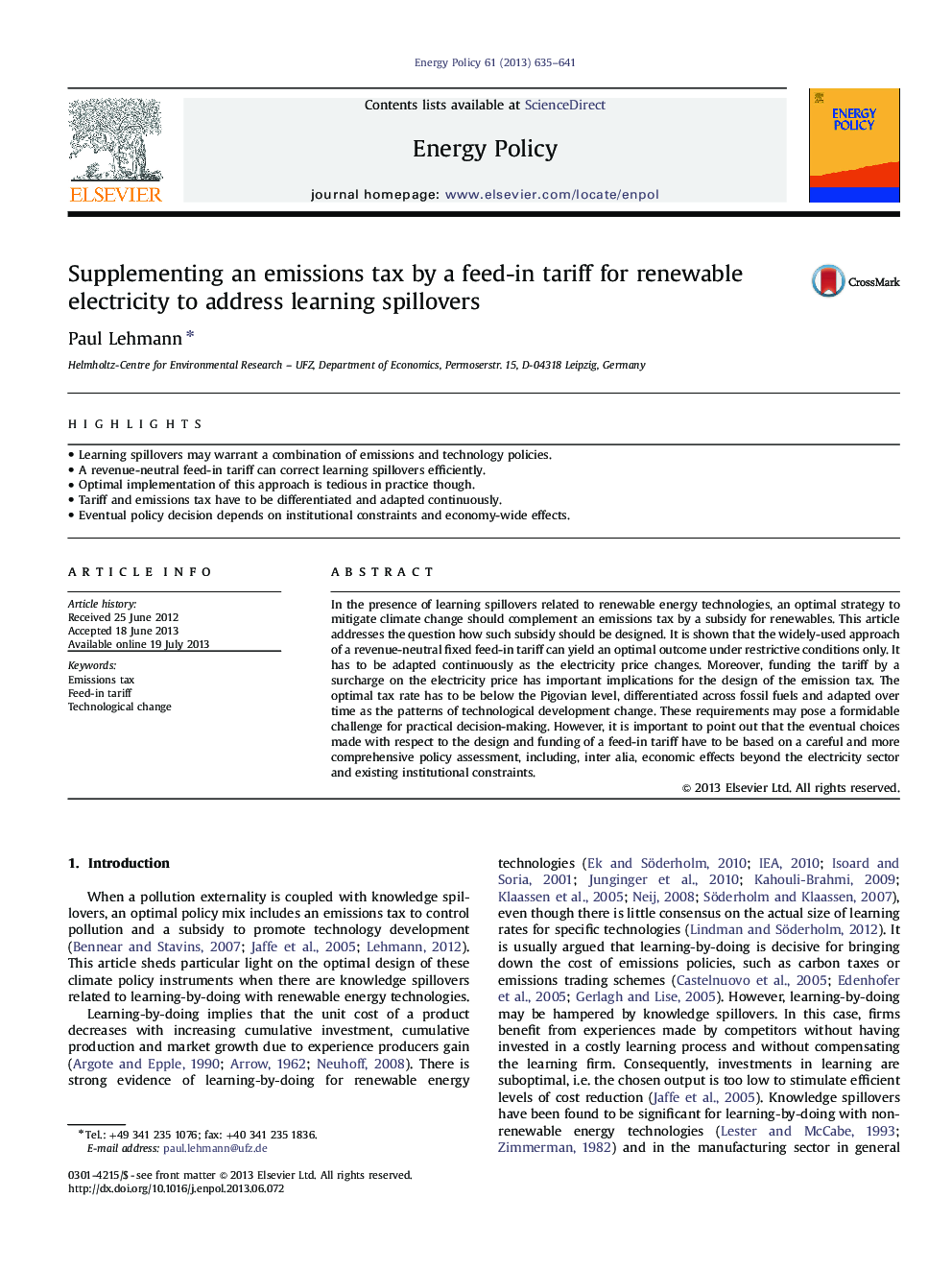| Article ID | Journal | Published Year | Pages | File Type |
|---|---|---|---|---|
| 7404721 | Energy Policy | 2013 | 7 Pages |
Abstract
In the presence of learning spillovers related to renewable energy technologies, an optimal strategy to mitigate climate change should complement an emissions tax by a subsidy for renewables. This article addresses the question how such subsidy should be designed. It is shown that the widely-used approach of a revenue-neutral fixed feed-in tariff can yield an optimal outcome under restrictive conditions only. It has to be adapted continuously as the electricity price changes. Moreover, funding the tariff by a surcharge on the electricity price has important implications for the design of the emission tax. The optimal tax rate has to be below the Pigovian level, differentiated across fossil fuels and adapted over time as the patterns of technological development change. These requirements may pose a formidable challenge for practical decision-making. However, it is important to point out that the eventual choices made with respect to the design and funding of a feed-in tariff have to be based on a careful and more comprehensive policy assessment, including, inter alia, economic effects beyond the electricity sector and existing institutional constraints.
Related Topics
Physical Sciences and Engineering
Energy
Energy Engineering and Power Technology
Authors
Paul Lehmann,
